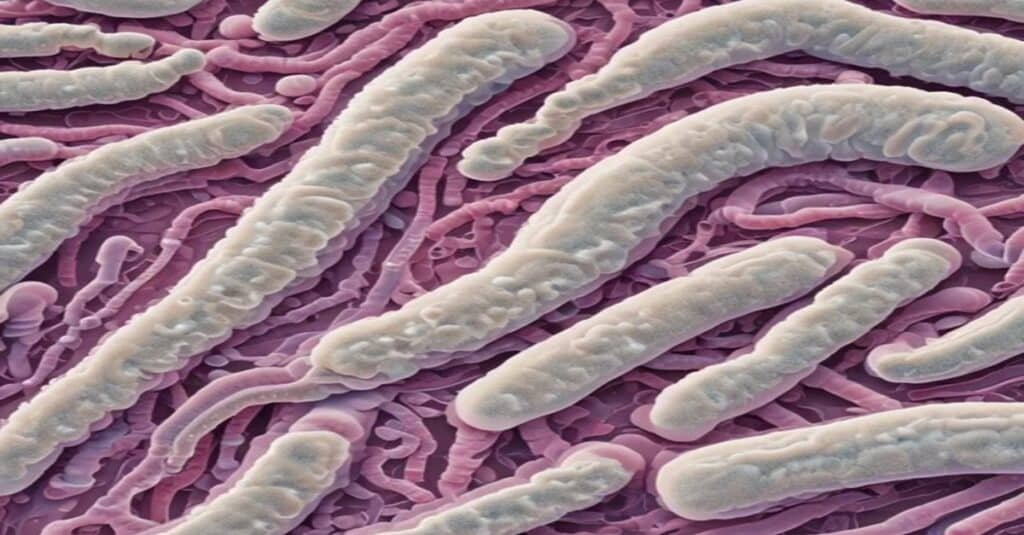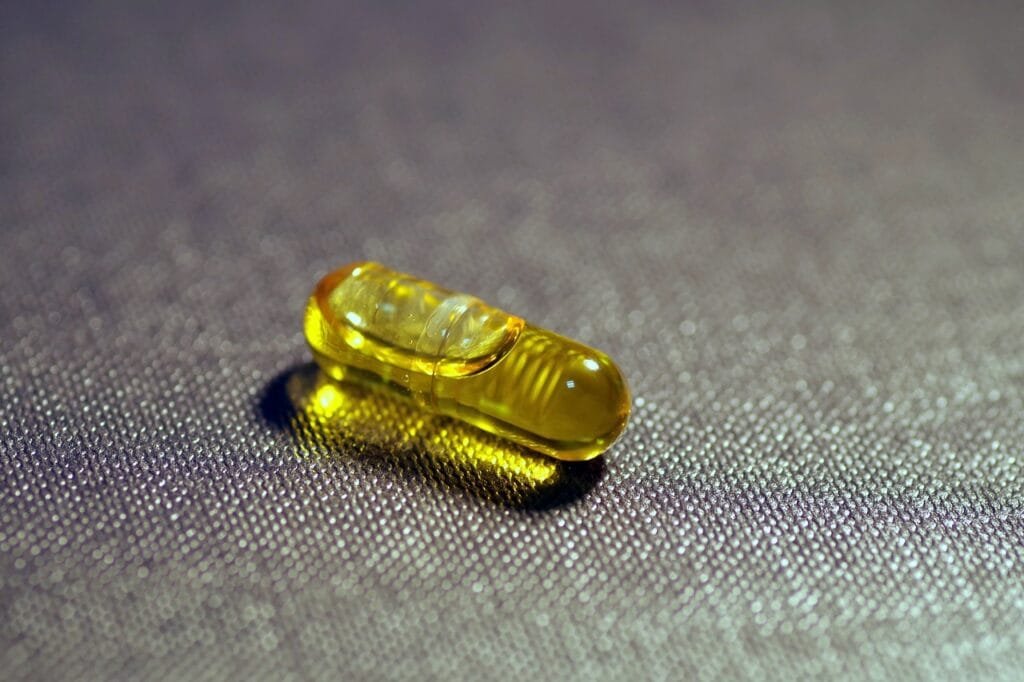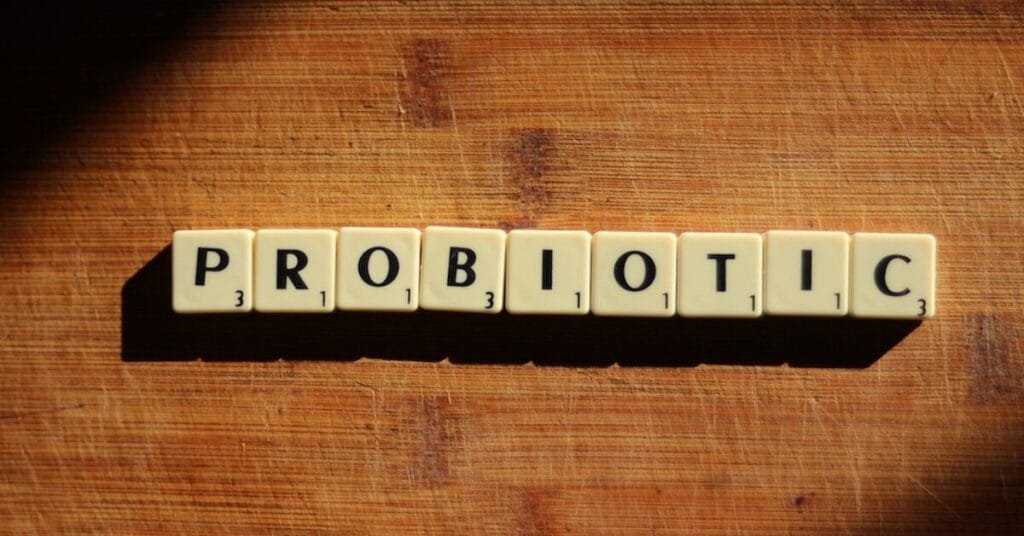Bifidobacterium longum: An acclaimed probiotic with unexpected health benefits
There’s evidence that our gut has many functions beyond digesting food, and gut microbiota plays an essential part. These bacteria interact with the immune system, the brain, and more. After all these years and studies, gut microbiota dysbiosis is not only a problem causing diarrhea. An imbalance in this microbiome can have neurologic, immune, metabolic, respiratory, and cardiovascular implications.
That’s why probiotic science has recently crowded scientific journals with new studies. And the supplement market provides many options to restore gut microbiota. Probiotics are a valuable strategy for maintaining health by ensuring the appropriate compositional balance in your gut. And the best part is that oral delivery is enough to make it work and doesn’t have dangerous side effects.
Also know about saccharomyces boulardii benefits
One of the supplements more commonly available as probiotic strains is Bifidobacterium longum. It is frequently added in functional foods and dietary supplements for gut health. But going beyond that, Bifidobacteria plays a fundamental role in adaptive immunity, metabolic regulation, and ensuring the appropriate interactions between gut and brain.
Read on, and you will learn more about what Bifidobacterium longum offers as a probiotic strain.
What everyone should know about Bifidobacterium longum
To simplify, we’ll refer to Bifidobacterium longum as B. longum. This is a gram-positive bacterial strain with a thick layer of peptidoglycans providing structure to the cell wall. When bacteria such as B. longum have this additional layer, it gives an extra protection barrier and structural solidity. You can see B. longum as irregular rods that sometimes adopt branches as the letter V or Y.
It is a non-motile bacteria that doesn’t produce gas and lives better without oxygen. The first time B. longum was isolated, it came from infant feces in 1899, and we now know it has a vital role in forming the infant’s immune system. There are over 120 taxa and 106 species under the genus Bifidobacterium (1,2).
As mentioned, this is one of the first bacteria to colonize a baby’s gut. Breastfeeding and vaginal delivery facilitate colonization by B. longum. Transmission is also possible through the mother’s amniotic fluid and the external microbial environment. Either way, after a few days, B. longum makes up around 80% of the total intestinal flora in the newborn (3).
Interestingly enough, breast milk contains substances known as oligosaccharides. They are prebiotics that will also help the baby’s system adopt B. longum and further colonize the gut. We could say that breast milk is our natural source of this probiotic when we are born. Then, after the beginning of food intake, we are exposed to many other bacteria, and the abundance of Bifidobacteria decreases to around 30% (3).
In contrast, Bifidobacteria in food sources are not always adapted to the human gut. There are two types of Bifidobacteria: human-residential and non-human residential. The latter does not adhere to the intestinal lining and rarely colonizes the gut. For example, if you see yogurt or another commercial dairy prepared with Bifidobacterium animalis spp. lactis, you should know this bacteria is only helpful for fermentation. It is a non-human residential bifidobacteria and has poor adhesion properties in your gut. In other words, it doesn’t count as an effective probiotic (4).
Benefits and health applications of B. longum
In contrast to Bifidobacterium animalis spp. lactis, B. longum is an excellent probiotic and adheres to the gut without hesitation. The mechanism of action is similar to that found in other probiotics: they compete against pathogenic bacteria, produce substances on their own, and leave signals for the immune system, among others.
In the following sections, you will learn how B. longum contributes to gut health and much more.
B. longum is a source of B vitamins and other nutrients
One of the most salient features of B. longum is that you can obtain B vitamins directly from its metabolism. The bacteria produce their own pantothenic acid, folic acid, and biotin, and your gut is then free to absorb the extra nutrients. So, this is an indirect source of vitamins B5, B7, and B9. The best part is that it will keep producing them after colonizing and as long as they remain in your gut.
Besides producing extra vitamins, B. longum also synthesizes digestive enzymes. For example, it produces glucosidase, oligosaccharidase, and galactosidase. These enzymes contribute to the digestion of proteins, lipids, and carbohydrates. For instance, the bacteria produce beta-galactosidase, and this enzyme breaks down lactose. That’s why some people may experience relief from lactose intolerance symptoms after consuming B. longum (5).
B. longum provides an additional barrier to protect your gut
A function B. longum shares with many other probiotics is the modulation of gut microbiota. However, in this case, we can say that B. longum produces a biological barrier composed of antibacterial compounds and organic acids.
First, bifidobacteria bind to the intestinal epithelial cells and divide. This forms a barrier that reduces intestinal pH by releasing organic acids. B. longum produces lactic and acetic acids, and pathogenic bacteria do not thrive in slightly acidic environments. But beyond inhibiting the growth of pathogenic bacteria, B. longum can even help destroy their toxins. For instance, it inhibits Clostridium difficile and degrades Clostridium toxins after the pathogenic bacteria is gone (6).
Additionally, B. longum produces bacteriocins, such as Bifidocin A, which acts against Escherichia coli, Listeria monocytogenes, and Staphylococcus aureus. These potent antibiotics create pores in the cell membrane and help neutralize pathogenic bacteria. They mainly work against damaging microorganisms that colonize the gut, causing uncomfortable symptoms (7).
https://youtu.be/iwds5Hr7-MYSee the video below.
B. longum can improve intestinal transit in patients with constipation
Hard, dry stools make defecation difficult in up to 20% of the adult population. The trend is now rising because of modern dietary changes and psychological factors. But instead of using laxatives, patients may initially try safer therapies such as supplementing bifidobacteria.
B. longum relieves constipation, but the effects may take long to establish. For instance, a study showed significant effects after supplementing for 16 weeks. But another study showed similar improvements in functional constipation after only 28 days. Either way, a single pill or taking the supplement one week won’t be enough. The intervention takes longer than that and you need consistency.
Patients completing the course of probiotics for a few weeks report a reduction in transit time and increase in frequency. However, not all patients have the same results. The mechanism is not entirely clear, and may involve neurotransmitter imbalance, immune system changes, and intestinal dysfunction. Either way, it is an excellent option to try before adopting other measures. Still, its effectiveness is sometimes a subject of controversy (8).
Read More health Blogs
B. longum can also work to prevent and treat diarrhea
Diarrhea is the other extreme manifestation of intestinal flora imbalance B. longum can treat. There are many causes of diarrhea, and this probiotic is effective against a few: rotavirus infections, clostridium difficile infections, and antibiotic-related diarrhea.
For instance, in antibiotic-related diarrhea, drugs used to clear an infection can also wipe out the gut microbiota. On doing so, there’s available space on the intestinal lining for pathogenic bacteria to colonize. After B. longum supplementation, the new strain creates a barrier as discussed above, and reduces the symptoms. The supplement also modulates the immune system, as we will discuss in the following lines, and help the body fight rotavirus.
That’s why B. longum can be effective to treat both constipation and diarrhea. In the latter case, there are many studies in healthy patients to reduce diarrhea incidence and infected patients to improve their symptoms. For instance, there’s a recent research by Escribano and colaborators with formula-fed infants who reduced diarrhea incidence after consuming formula supplemented with Bifidobacterium (9).
B. longum enhances the responsiveness of the immune system
One of the reasons B. longum is so important for the newborn is that it modulates the immune system from an early stage. These bacterial strains can enhance both innate and specific immune responses, and this can also benefit adult users. More specifically, B. longum helps the immune system activate T-lymphocytes, natural killer cells, and other immune cells. It also stimulates the production of immunoglobulin A (IgA), which is fundamental in fighting viruses such as rotavirus.
B. longum achieves this effect by two main pathways: through their metabolic byproducts and through cell components. Firstly, the bacteria produces short-chain fatty acids which stimulate the immune system. Secondly, it has cell wall components the immune system recognizes and responds by activating circulating immune cells (10).
B. longum can also behave as an anti-inflammatory
Activating immune cells does not mean B. longum causes an immune response characterized by inflammation. We could say it modulates the immune response, prompting your defenses to be more active but not to the point of becoming overactive.
That’s why patients with inflammatory bowel disease benefit greatly from B. longum supplementation. They usually experience symptoms such as diarrhea, abdominal pain, and other uncomfortable symptoms. Medical treatment consists of therapies that carry their own risks, an increased infection incidence and leucopenia among them. But some people with inflammatory bowel disease also have a dysbiosis, and by solving this problem they can also improve their symptoms without as many side effects.
In these users, Bifidobacteria can downregulate inflammatory substances such as interleukin 6. It also upregulates substances with an anti-inflammatory potential, such as interleukin 10. These are produced naturally by our immune cells and what Bifidobacteria does is simply sending signals to modulate secretion. On doing so, they also improve the function of tight junctions and prevent epithelial problems in the intestinal lining (11).
B. longum can reduce the incidence of allergic reactions
Another important modulation of B. longum on the immune system has to do with allergies. You have probably heard about the hygiene hypothesis, which says that extreme hygiene during infancy reduces our exposure to allergens and the immune system becomes hyperreactive and prone to developing allergies.
The hygiene hypothesis may not be entirely valid in all cases, but has a solid foundation. When bacterial diversity is reduced in the gut, there’s a decrease in regulatory T cells. T helper cells also have an inadequate immune response with excessive production of Th2 cytokines, and insufficient production of Th1 cytokines. This is the perfect environment for allergens to reach the body and cause a hyperactive immune response.
Also read about streptococcus thermophilus probiotic benefits
In this scenario, B. longum modulates the equilibrium between Th1 and Th2 cytokines. It suppresses Th2 responses and shifts your body to Th1. Your body stops producing hyperactive substances, and allergies improve (12).

B. longum has beneficial effects in the nervous system
There’s a communication between the nervous system and the gut via the gut-brain axis. This link is facilitated by the vagus nerve, neurotransmitter synthesis, and microbial metabolites, among other mechanisms. This explains why some intestinal dysbiosis are associated with depression, Alzheimer’s disease, and other problems.
Studies show that Bifidobacterium strains may alleviate Alzheimer’s disease and other neurological diseases. Some strains may have an antidepressant effects while others have a positive effect on cognition. However, it is important to mention these benefits are still under research. So far it is evident it is a potential psychobiotic that modulates stress, cognitive function, and electrochemical changes in the brain (13).
B. longum improves fasting blood glucose and may have an effect on bodyweight
Some studies successfully used Bifidobacterium strains to counter obesity and its effects on the body. These effects are also under research, but there are a few clinical trials with promising results.
When applied to animal models, B. longum supplementation decreases body weight, fat depot accumulation, and improves glucose metabolism. In humans, bodyweight changes are not noticeable in all studies. However, fasting blood glucose levels improve after 12 weeks of supplementation.
In other words, even if your weight doesn’t change, your blood parameters will likely improve. In this particular case, the body becomes more sensitive to insulin and responds by maintaining lower blood glucose levels (14).
Do you know about probiotic yeast saccharomyces boulardii read about it as well.
Key takeaways from consuming B. longum
After learning more about B. longum we know how probiotics can go beyond gut health and benefit the entire body. In this case, the bacteria is one of the most important during infancy and continues to colonize the gut as we grow up.
It is a source of nutrients, especially B vitamins and beneficial metabolites such as short-chain fatty acids. It stimulates the immune system through various ways and may even improve our response against viruses such as rotavirus. As such, it reduces the incidence of diarrhea by this and other mechanisms, but may also counter some cases of constipation.
On the gut tissue, B. longum acts as a potent anti-inflammatory, and patients with inflammatory bowel disease may reduce their symptoms after consuming the probiotic. However, it also stimulates the immune system and prevents allergies.
More studies are still required to validate some applications. For example, its applications on obesity, metabolic syndrome, and psychiatric disorders. However, the probiotic is considered safe and devoid of dangerous side effects. Thus, we can get many benefits by consuming foods and supplements enriched with this probiotic. Just make sure they don’t have non-human residential strains, such as Bifidobacterium animalis spp. lactis, because these won’t adhere to the intestinal lining.
References
- Tissier, H. (1899). Le bacterium coli et la reaction chromophile d’escherich. Crit. Rev. Soc. Biol, 51, 943-945.
- Duranti, S., Lugli, G. A., Napoli, S., Anzalone, R., Milani, C., Mancabelli, L., … & Ventura, M. (2019). Characterization of the phylogenetic diversity of five novel species belonging to the genus Bifidobacterium: Bifidobacterium castoris sp. nov., Bifidobacterium callimiconis sp. nov., Bifidobacterium goeldii sp. nov., Bifidobacterium samirii sp. nov. and Bifidobacterium dolichotidis sp. nov. International journal of systematic and evolutionary microbiology, 69(5), 1288-1298.
- O’Neill, I., Schofield, Z., & Hall, L. J. (2017). Exploring the role of the microbiota member Bifidobacterium in modulating immune-linked diseases. Emerging topics in life sciences, 1(4), 333-349.
- Kato, K., Odamaki, T., Mitsuyama, E., Sugahara, H., Xiao, J. Z., & Osawa, R. (2017). Age-related changes in the composition of gut Bifidobacterium species. Current microbiology, 74, 987-995.
- Vitellio, P., Celano, G., Bonfrate, L., Gobbetti, M., Portincasa, P., & De Angelis, M. (2019). Effects of Bifidobacterium longum and Lactobacillus rhamnosus on gut microbiota in patients with lactose intolerance and persisting functional gastrointestinal symptoms: A randomised, double-blind, cross-over study. Nutrients, 11(4), 886.
- Wei, Y., Yang, F., Wu, Q., Gao, J., Liu, W., Liu, C., … & Tang, R. (2018). Protective effects of bifidobacterial strains against toxigenic Clostridium difficile. Frontiers in microbiology, 9, 888.
- Liu, G., Song, Z., Yang, X., Gao, Y., Wang, C., & Sun, B. (2016). Antibacterial mechanism of bifidocin A, a novel broad-spectrum bacteriocin produced by Bifidobacterium animalis BB04. Food Control, 62, 309-316.
- Ibarra, A., Latreille-Barbier, M., Donazzolo, Y., Pelletier, X., & Ouwehand, A. C. (2018). Effects of 28-day Bifidobacterium animalis subsp. lactis HN019 supplementation on colonic transit time and gastrointestinal symptoms in adults with functional constipation: a double-blind, randomized, placebo-controlled, and dose-ranging trial. Gut Microbes, 9(3), 236-251.
- Escribano, J., Ferré, N., Gispert-Llaurado, M., Luque, V., Rubio-Torrents, C., Zaragoza-Jordana, M., … & Closa-Monasterolo, R. (2018). Bifidobacterium longum subsp infantis CECT7210-supplemented formula reduces diarrhea in healthy infants: a randomized controlled trial. Pediatric Research, 83(6), 1120-1128.
- Pyclik, M., Srutkova, D., Schwarzer, M., & Gorska, S. (2020). Bifidobacteria cell wall-derived exo-polysaccharides, lipoteichoic acids, peptidoglycans, polar lipids and proteins–their chemical structure and biological attributes. International journal of biological macromolecules, 147, 333-349.
- Yao, S., Zhao, Z., Wang, W., & Liu, X. (2021). Bifidobacterium longum: protection against inflammatory bowel disease. Journal of immunology research, 2021(1), 8030297.
- Eslami, M., Bahar, A., Keikha, M., Karbalaei, M., Kobyliak, N. M., & Yousefi, B. (2020). Probiotics function and modulation of the immune system in allergic diseases. Allergologia et Immunopathologia, 48(6), 771-788.
- Allen, A. P., Hutch, W., Borre, Y. E., Kennedy, P. J., Temko, A., Boylan, G., … & Clarke, G. (2016). Bifidobacterium longum 1714 as a translational psychobiotic: modulation of stress, electrophysiology and neurocognition in healthy volunteers. Translational psychiatry, 6(11), e939-e939.
- Schellekens, H., Torres-Fuentes, C., van de Wouw, M., Long-Smith, C. M., Mitchell, A., Strain, C., … & Cryan, J. F. (2021). Bifidobacterium longum counters the effects of obesity: Partial successful translation from
See more articles in Education.





Pingback: When You Stop Eating for a Week: Harrowing Journey of Starvation
Pingback: Hemorrhoid Hero: Natural Remedies to Save Your Rear from Rebellion
Pingback: Cross-Functional Fitness for Dads: Stay Strong & Energized
Pingback: How Stress Affects Your Body: Migraines to Heart Risk
Pingback: Ayurvedic Practices for Mastering Digestion Naturally
Pingback: Boost Immunity Naturally - Essential Food and Habits
Pingback: Fitness Myths Busted: Truths About Weight Loss & Strength
Pingback: Weight Loss Secrets: What Really Works
Pingback: Meal Planner: Your Simple Path to Healthy Eating